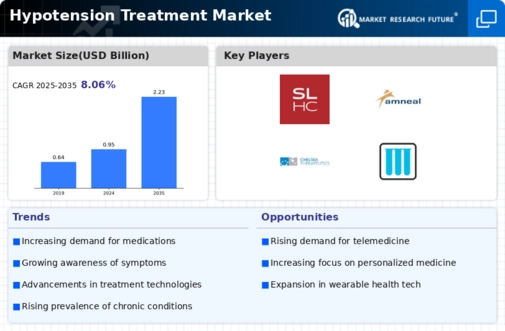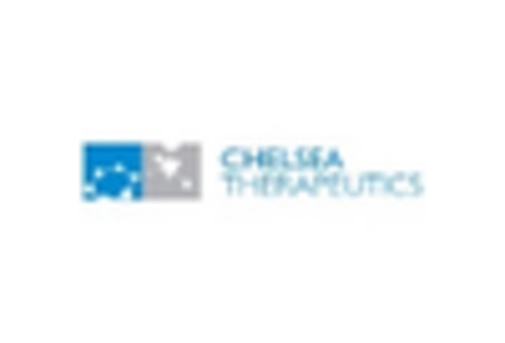Market Share
Hypotension Treatment Market Share Analysis
The hypotension treatment market is an ever-changing and competitive area in which pharmaceutical companies try to capture the largest piece of the cake. In order to adequately position themselves, companies use a range of strategies that meet patients’ unique requirements for low blood pressure. The primary strategy in this respect is product differentiation where they produce new drugs that have different mechanisms of action over existing treatments or offer enhanced efficacy than those already available. This way not only can medical practitioners decide on better therapeutic choices but also it enables them to be more competitive.
Meanwhile, firms concentrate on forming resilient relationships with health care providers as they fight their way up into the market. These include continuous medical education programs, working closely with key opinion leaders and active involvement in medical conferences. For healthcare professionals, being trust worthy support and information providers can affect drug prescribing preferences and improve company’s sales volumes. To win a higher share of the pie in treating hypotension, building some credibility through the healthcare community is vital.
Moreover, patient-focused strategies also play an important role in market share positioning. Thus, when companies understand what these patients need and want from products especially those which treat hypotensive conditions; then they are able to customize their goods or services based on such specifications. It may entail designing patient support programs or educational materials as well as developing digital health solutions aimed at improving patient adherence and satisfaction levels among others. From this perspective, businesses that respect this type of individual approach as well as ensuring availability of complete back up facilities gain more loyalty hence having broader presence in terms of customer numbers.
Strategic pricing is another crucial factor when it comes to occupying one’s place within a given market share bracket for Hypotension Treatment Market competitors . Again price must be balanced taking into account competitiveness so as to gain advantage over other players while still maintaining profitability margins (Peng 2013). Offering discounts, rebates or even adopting strategic pricing models can specifically attract healthcare providers and payers with the aim of changing market dynamics towards favoring a given company. Additionally, partnering with insurance companies and government health programs may also increase affordability and access thereby influencing a bigger presence on the market.
To widen their share in hypotension treatment, firms go for global expansion strategies. This will enable them to reach more patients and tap into different healthcare systems existing in those regions that are not yet served by them. As such, it would involve dealing with regulatory landscapes, adjusting to the cultural preferences of various communities or even addressing local health challenges. In addition, efficient global expansion tactics help these organizations to broaden their revenue basis aside from strengthening their overall competitive standing.
Finally, continuous research and development activities are necessary to maintain and grow market share in the hypotension treatment industry (Schoenfelder & Sutton 2012). New medications need to be introduced by these companies so that they can outperform their competitors while keeping up with changing patient needs and emerging medical trends. Investing in research enhances product portfolios but also shows commitment towards availing better medical science hence improves the brand image within both health care community and patients."








Leave a Comment